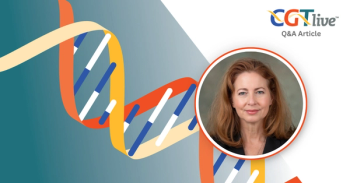
When Curative Treatment Options Should Be Considered for Sickle Cell Disease
Shalini Shenoy, MD, MBBS, discussed when the choice should be made to transition from symptom management to curative therapies.
The landscape of care for sickle cell disease (SCD) is rapidly shifting with the arrival of new treatment options. Between new drugs for symptom management, improvements to allogeneic hematopoietic stem cell transplant, and the advent of gene therapies, choosing the right option for each individual patient is becoming more complicated.
A session focused on this topic entitled “The evolving paradigm of sickle cell disease management” was part of the program at
CGTLive: Can you give some background context about the session you spoke at?
Shalini Shenoy, MD, MBBS: It was a session directed at SCD and the therapies that are available for it. It was focusing on how to decide between all the newer agents that are coming up to control the disease; and then what are the curative therapies out there? What are the pros and cons of moving on to curative therapy? Who moves on? What kind of therapy would benefit them? That was the gist of the program.
What were the key points discussed during the session?
It was divided into 3 portions. The first one was about the actual newer drugs that are either already on board or coming on board for SCD. Those drugs are all for disease control, they are not for disease eradication. That was what the point we wanted to make was, and then who was likely to respond and who may not respond? What do you do when they progress? That was the first part.
The second was about allogeneic transplant, which was what I spoke about. We’ve come a long way in the last 30 years with transplant. I highlighted what the recent progress that has been made was where we are now looking at cure rates of easily over 85% and survival rates of in the high 90s, which was not something we were able to say before. I highlighted all the changes that have been made that have led to this. The other thing is the use of donors that we were never ever able to use before. Now we use mismatched donors, unrelated donors, haploidentical donors—and that’s progress.
Then the third part of the discussion was about the gene therapy approaches that are actually now either already FDA-approved or [among] a bunch of other studies that are coming on that are in clinical trials. Eventually, I envision multiple gene therapy agents being available. We will need to decide if there are any advantages or disadvantages between them. We don't know of any yet. There are a lot of unanswered questions, but I think this is the best start we can have and then I think with time we will understand more about the pros and the cons.
What would you say are the main takeaways from the session for the healthcare community?
That what was considered the standard therapy for SCD is not standard anymore, that we have to be proactive about controlling their disease, making sure they have a great quality of life, and making sure they have no long-term side effects from the disease... They should have a normal lifestyle [on drugs for symptom management], and if they don't then it's time to consider a curative therapy for these patients, whether they're children or adults. It really I think is the time to discuss more with them than just symptom control at this point.
Can you speak about areas of interest for further research in this field?
I think the outcomes will continue to improve, probably both for transplant and for gene therapy. I think long-term follow up is going to be a huge area of interest because you really want to know if all these therapies are equivalent in terms of organ damage, and whether one is better than the other? That kind of follow-up is extremely important. Then the other is: Are there downsides? Like there were a couple of reports of malignancies both for radiation-based transplants, as well as for gene therapy in the last few years. There have been changes that have been made to try to avoid those and also more monitoring is in place. Whether we've gotten over that kind of toxicity is a big question. The other is: Can we reverse everything that happens to the brain, the lungs, the kidney, etc., with what we're doing? We do want to get rid of symptoms, for sure, but we also want to get rid of long-term unnoticed damage that then raises its ugly head in the 40s, which has been an issue.
Is there anything else you would like to share?
I think there's a lot of work going on in helping patients access these therapies. Trying to find a center that is used to dealing with these therapies, negotiating, and moving forward, is important. Continuous follow-up at such centers would be helpful so that you can decide when someone needs to go. Then the cost—I think if we don't talk about the elephant in the room, the cost of all these therapies, it would not be fair. But I think that there are ways around it. We’re just starting, so you obviously are going to have that starting trouble, but I think this road will be smoother as we go on and as more therapies come on board. I'm optimistic, and I think we all should be, but I think referral is key.
This transcript has been edited for clarity.
REFERENCES
1. Sharma A, Sheehan V, Shenoy S. Tandem Thursday breakfast symposium: the evolving paradigm of sickle cell disease management. Presented at: 2024 Tandem Meetings, February 21-24, San Antonio, Texas. Session #S-B1.
Newsletter
Stay at the forefront of cutting-edge science with CGT—your direct line to expert insights, breakthrough data, and real-time coverage of the latest advancements in cell and gene therapy.

















































